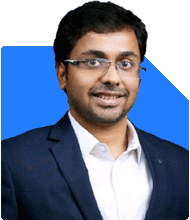Where to Reinvest Money After Selling UTI Index Fund - A Small Business Owner's Dilemma
Ramalingam Kalirajan |7852 Answers |Ask -Follow
Mutual Funds, Financial Planning Expert - Answered on Sep 17, 2024
He has an MBA in finance from the University of Madras and is a certified financial planner.
He is the director and chief financial planner at Holistic Investment, a Chennai-based firm that offers financial planning and wealth management advice.... more

Thank you for spending the time to answer my query. One question: at the moment, after going through your suggestion According to what I understand, large-cap 23k (15 + 8). mid-cap 22k (15 + 7) small-cap 20k (15 + 5) flexi-cap 21k (15 + 6) Active cap 15k ( no changes ) digital 19k ( 15+4) micro-cap 5k ( no changes) if i want to stop uti index fund, then where this money can be reinvested whether to put it in a hybrid fund or a balance fund as a fresh sip with respect to response on FD, i am quite clear. Thank you somuch for your time
Here’s how you can allocate:
Hybrid Fund: Allocate the full Rs 15k here. This adds a layer of safety with debt exposure while maintaining equity growth potential. It’s ideal as you approach the 7-10 year horizon.
This will further diversify and stabilize your portfolio.
Best Regards,
K. Ramalingam, MBA, CFP,
Chief Financial Planner,
www.holisticinvestment.in
You may like to see similar questions and answers below
Ramalingam Kalirajan |7852 Answers |Ask -Follow
Mutual Funds, Financial Planning Expert - Answered on Apr 12, 2024
Ramalingam Kalirajan |7852 Answers |Ask -Follow
Mutual Funds, Financial Planning Expert - Answered on Apr 02, 2024
Ramalingam Kalirajan |7852 Answers |Ask -Follow
Mutual Funds, Financial Planning Expert - Answered on Apr 16, 2024
Milind Vadjikar |977 Answers |Ask -Follow
Insurance, Stocks, MF, PF Expert - Answered on Jan 31, 2025
Moneywize |175 Answers |Ask -Follow
Financial Planner - Answered on Feb 06, 2025
Ramalingam Kalirajan |7852 Answers |Ask -Follow
Mutual Funds, Financial Planning Expert - Answered on Feb 06, 2025
Ramalingam Kalirajan |7852 Answers |Ask -Follow
Mutual Funds, Financial Planning Expert - Answered on Feb 06, 2025
Ramalingam Kalirajan |7852 Answers |Ask -Follow
Mutual Funds, Financial Planning Expert - Answered on Feb 06, 2025
Ramalingam Kalirajan |7852 Answers |Ask -Follow
Mutual Funds, Financial Planning Expert - Answered on Feb 06, 2025
Ramalingam Kalirajan |7852 Answers |Ask -Follow
Mutual Funds, Financial Planning Expert - Answered on Feb 06, 2025
Ramalingam Kalirajan |7852 Answers |Ask -Follow
Mutual Funds, Financial Planning Expert - Answered on Feb 06, 2025
Samkit Maniar |180 Answers |Ask -Follow
Tax Expert - Answered on Feb 06, 2025
Ramalingam Kalirajan |7852 Answers |Ask -Follow
Mutual Funds, Financial Planning Expert - Answered on Feb 06, 2025
Ramalingam Kalirajan |7852 Answers |Ask -Follow
Mutual Funds, Financial Planning Expert - Answered on Feb 06, 2025

























